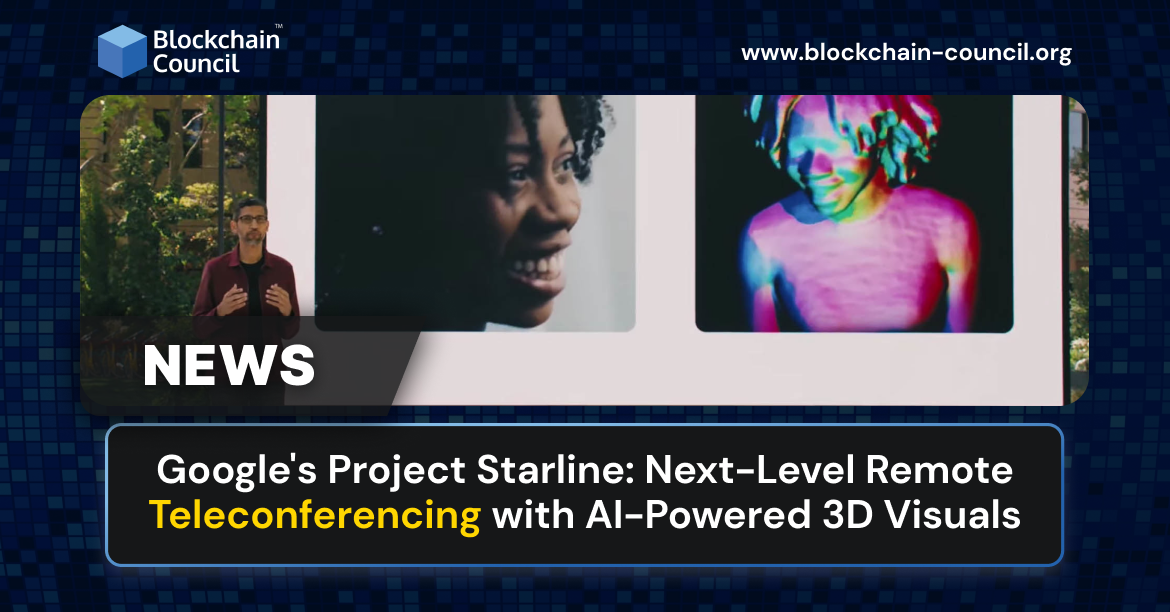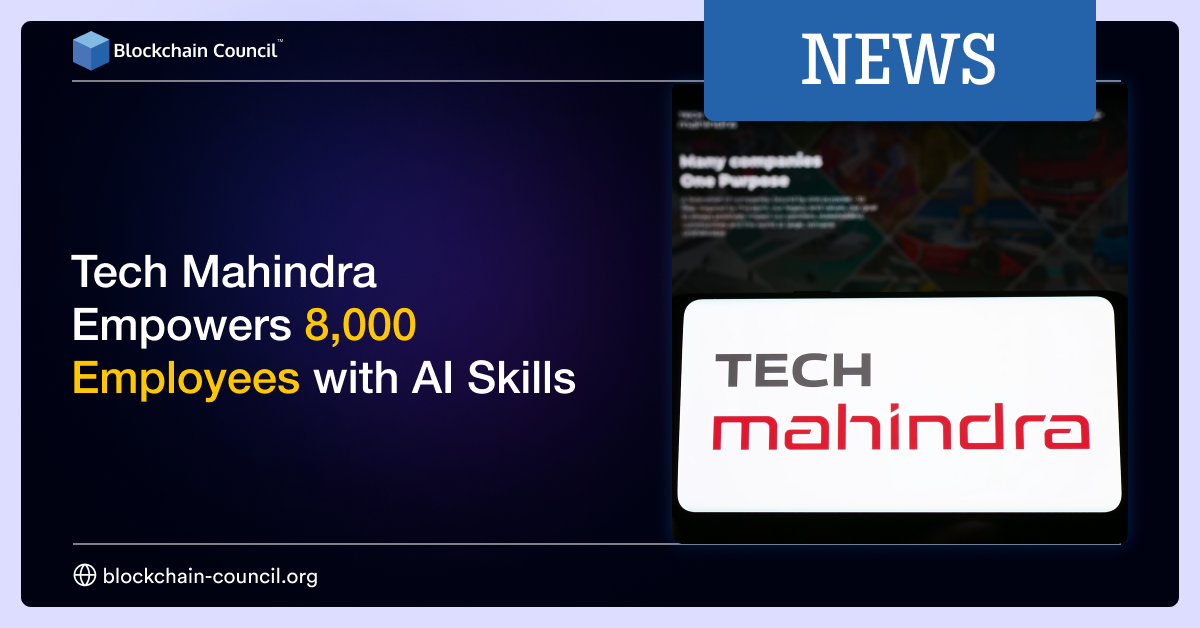
- Blockchain Council
- October 25, 2023
Google’s Project Starline is revolutionizing remote teleconferencing with its AI-powered 3D visuals, bringing people together across distances like never before. The technology creates a lifelike, three-dimensional representation of the person you’re communicating with, making it feel as if they’re right in front of you.
The latest prototype of Project Starline has been unveiled, featuring a simpler design that can fit into various spaces. This advancement was made possible by leveraging artificial intelligence (AI) techniques that require only a few standard cameras to generate high-quality, photorealistic 3D images. The previous prototypes were much larger and more complex, limiting their practicality in everyday office environments.
In 2021, Google unveiled a groundbreaking technology project called Project Starline, aimed at bridging the physical divide and enabling a lifelike remote communication experience. Project Starline acts as a magical window, allowing users to interact with others in three dimensions as if they were in the same room. This transformative technology utilizes advanced AI algorithms to generate a photorealistic model of the person being communicated with and projects it onto a light field display, creating a sense of depth and volume. Now, Google is taking a giant leap forward by introducing a simpler and more accessible prototype, thanks to remarkable advancements in AI.
Also read: How to Become a Certified ChatGPT Expert?
The earlier iterations of Project Starline required a significant amount of space, as well as complex hardware like infrared light emitters and specialized cameras. While the results were impressive, it was challenging to deploy the system in many contemporary office environments. However, Google’s relentless pursuit of innovation has led to the development of new AI techniques that eliminate the need for extensive hardware. The latest prototype has a smaller footprint, comparable to a flat-screen TV, making it easier to deploy and fit into various spaces. This significant improvement in size and simplicity expands the potential for widespread adoption of Project Starline.
Google has collaborated with industry leaders such as Salesforce, T-Mobile, and WeWork as part of the early access program for Project Starline. The initial feedback from these partners has been overwhelmingly positive, demonstrating the immense potential of this revolutionary technology. According to Andy White, SVP of Business Technology at Salesforce, Project Starline has the power to foster deeper relationships among employees and customers, enhance trust and transparency, and drive productivity and efficiency. These promising results highlight the profound impact that Project Starline can have on connecting distributed workforces and enhancing collaboration.
One of the key benefits of Project Starline is its ability to facilitate more natural and engaging conversations compared to traditional video conferencing. Through carefully designed behavioral lab experiments, Google researchers have uncovered fascinating insights. Participants who engaged in conversations using Project Starline exhibited higher rates of turn-taking, creating more dynamic and interactive discussions. Additionally, participants reported a heightened sense of naturalness, smoothness, and ease in these conversations. The technology also enables individuals to express themselves more freely, leading to an increase in nonverbal cues such as hand gestures, head nods, and eyebrow movements. These findings demonstrate how Project Starline transcends the limitations of conventional video conferencing, allowing for more authentic and engaging interactions.
Video meeting fatigue has become a prevalent challenge in the digital era. The cognitive load associated with interpreting nonverbal cues in video communication often leads to exhaustion. Google’s research shows that Project Starline has the potential to alleviate this fatigue. Participants who engaged in mock meetings using Project Starline reported significantly lower levels of video meeting fatigue compared to traditional video conferencing. The immersive nature of the technology, combined with the improved representation of nonverbal behavior, contributes to a more engaging and less taxing remote communication experience.
Maintaining focus and attentiveness during video conferences can be challenging, as individuals are often distracted by secondary devices or other tasks. However, Project Starline offers a compelling solution by enhancing attentiveness through its realistic representation of conversation partners. Studies conducted by Google using eye-tracking glasses revealed that participants spent a significantly higher proportion of time looking at their conversation partner’s face in Project Starline, akin to in-person interactions. This finding highlights the immersive nature of the technology and its ability to captivate users’ attention, ultimately leading to more meaningful and productive discussions.
Beyond the controlled research studies, Google has also collected extensive feedback from real-world users within the company. Employees who have experienced Project Starline firsthand have expressed their preference for this technology over traditional video conferencing. They noted that meetings conducted through Project Starline felt superior in terms of presence, nonverbal behavior, attentiveness, and personal connection. Over 87% of participants indicated a strong preference for using Project Starline as their primary communication tool. This resounding endorsement from users underscores the potential of Project Starline to redefine remote teleconferencing.
Project Starline has the potential to revolutionize various industries and address the challenges posed by distance and physical barriers. From enabling more effective telemedicine consultations to fostering collaboration among global research teams, the applications are vast and wide-ranging. Google envisions a future where Project Starline can bring people closer together, regardless of their geographical location, and combat the growing issue of loneliness in our increasingly digital world. As Google continues to refine and expand the capabilities of Project Starline, the possibilities for transforming remote communication are boundless.
Also read: Google’s TPU v4: Enhancing Reliability and Efficiency for Training Large Language Models





































































 Guides
Guides News
News Blockchain
Blockchain Cryptocurrency
& Digital Assets
Cryptocurrency
& Digital Assets Web3
Web3 Metaverse & NFTs
Metaverse & NFTs
